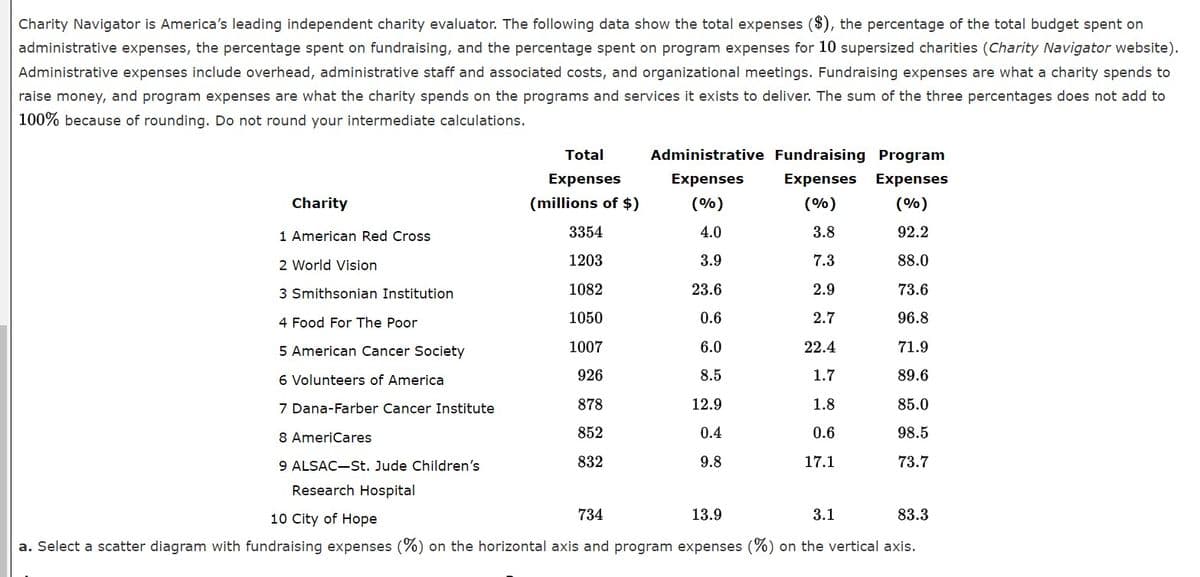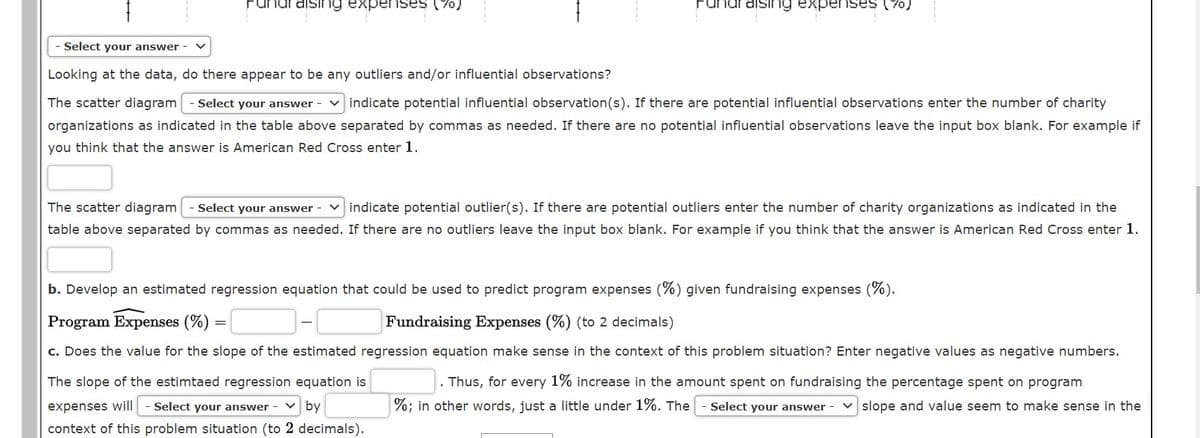Charity Navigator is America's leading independent charity evaluator. The following data show the total expenses ($), the percentage of the total budget spent on administrative expenses, the percentage spent on fundraising, and the percentage spent on program expenses for 10 supersized charities (Charity Navigator website). Administrative expenses include overhead, administrative staff and associated costs, and organizational meetings. Fundraising expenses are what a charity spends to raise money, and program expenses are what the charity spends on the programs and services it exists to deliver. The sum of the three percentages does not add to 100% because of rounding. Do not round your intermediate calculations. Total Administrative Fundraising Program Expenses Expenses Expenses Expenses Charity (millions of $) (%) (%) (%) 1 American Red Cross 3354 4.0 3.8 92.2 2 World Vision 1203 3.9 7.3 88.0 3 Smithsonian Institution 1082 23.6 2.9 73.6 4 Food For The Poor 1050 0.6 2.7 96.8 5 American Cancer Society 1007 6.0 22.4 71.9 6 Volunteers of America 926 8.5 1.7 89.6 7 Dana-Farber Cancer Institute 878 12.9 1.8 85.0 8 AmeriCares 852 0.4 0.6 98.5 9 ALSAC-St. Jude Children's 832 9.8 17.1 73.7 Research Hospital 10 City of Hope 734 13.9 3.1 83.3 a. Select a scatter diagram with fundraising expenses (%) on the horizontal axis and program expenses (%) on the vertical axis.
18. Charity Navigator is America’s leading independent charity evaluator. The following data show the total expenses (, the percentage of the total budget spent on administrative expenses, the percentage spent on fundraising, and the percentage spent on program expenses for supersized charities (Charity Navigator website). Administrative expenses include overhead, administrative staff and associated costs, and organizational meetings. Fundraising expenses are what a charity spends to raise money, and program expenses are what the charity spends on the programs and services it exists to deliver. The sum of the three percentages does not add to because of rounding. Do not round your intermediate calculations.
Kindly answer letters A, B & C


Trending now
This is a popular solution!
Step by step
Solved in 4 steps with 2 images




